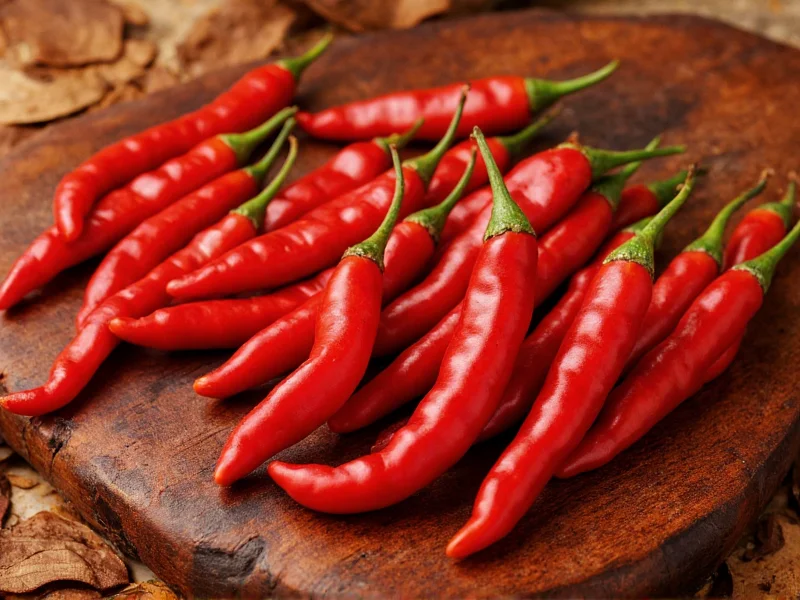The habanero pepper's legendary heat makes it a favorite among spice enthusiasts but requires careful handling for kitchen beginners. As one of the hottest commonly available peppers, its Scoville rating puts it approximately 10-50 times hotter than a jalapeño and just below the notorious ghost pepper on the heat scale. This substantial heat range exists because habanero peppers aren't a single uniform variety but encompass multiple cultivars with different heat profiles.
Understanding the Scoville Scale and Habanero Heat
Invented by pharmacist Wilbur Scoville in 1912, the Scoville Organoleptic Test originally measured pepper heat through human taste panels diluting pepper extract until the heat became undetectable. Today, high-performance liquid chromatography (HPLC) provides more precise measurements of capsaicinoids—the compounds responsible for chili heat—but the Scoville scale remains the standard reference.
When discussing habanero pepper spice level, it's important to recognize that "habanero" refers to a category of peppers with significant variation. The classic orange habanero typically ranges from 100,000-350,000 SHU, while some specialty varieties can push beyond these boundaries. Environmental factors like soil composition, climate, and water stress significantly impact final heat levels, meaning two habaneros from the same plant might differ noticeably in spiciness.
| Pepper Variety | Scoville Heat Units (SHU) | Heat Comparison to Habanero |
|---|---|---|
| Bell Pepper | 0 SHU | 0 times (no heat) |
| Jalapeño | 2,500-8,000 SHU | 12-40 times milder |
| Serrano | 10,000-23,000 SHU | 4-10 times milder |
| Habanero (standard) | 100,000-350,000 SHU | Baseline |
| Red Savina Habanero | Up to 577,000 SHU | Up to 1.6 times hotter |
| Ghost Pepper | 855,000-1,041,427 SHU | 2.4-3 times hotter |
Historical Evolution of Heat Measurement
Tracking the development of heat measurement provides crucial context for interpreting modern Scoville ratings:
- 1912: Wilbur Scoville develops the original organoleptic test, published in the Journal of the American Pharmaceutical Association. This subjective method relied on human tasters diluting pepper extract until heat became undetectable. (Source: Purdue University Extension)
- Late 20th Century: High-performance liquid chromatography (HPLC) replaces human testing as the scientific standard for measuring capsaicinoids, providing objective data that's converted to Scoville units for consumer reference. (Source: National Center for Biotechnology Information)
- 1994-2006: The Red Savina habanero holds the Guinness World Record for hottest chili pepper after laboratory testing confirms heat levels up to 577,000 SHU, significantly raising public awareness of habanero intensity. (Source: Guinness World Records)
Factors That Influence Habanero Pepper Heat Level
Several elements affect the final habanero pepper spice level you'll experience:
- Growing conditions: Stressors like inconsistent watering, nutrient deficiencies, and temperature fluctuations can increase capsaicin production
- Pepper maturity: Fully ripe (typically orange or red) habaneros tend to be hotter than green, unripe ones
- Varietal differences: Chocolate habaneros often run hotter than standard orange varieties
- Plant position: Peppers growing in direct sunlight usually develop more heat than shaded counterparts
- Part of the pepper: The placenta (white ribs) contains the highest concentration of capsaicin
Practical Implications of Habanero Heat Level
Understanding habanero pepper spice level isn't just academic—it has real kitchen consequences. When working with these fiery peppers, always:
- Wear gloves to prevent capsaicin transfer to sensitive areas
- Remove seeds and white membranes for reduced heat
- Start with small quantities (1/4 pepper) and adjust gradually
- Balance heat with acid (lime juice) or sweetness (mango, peach)
- Have dairy products (milk, yogurt) nearby to counteract excessive heat
For those wondering how hot is habanero compared to other peppers, consider that one habanero often equals 20-30 jalapeños in heat potential. This explains why habanero-based hot sauces require careful formulation to remain palatable while delivering that distinctive tropical fruit flavor beneath the fire.
Consumer Perception of Extreme Heat
Understanding habanero pepper spice level requires considering how consumers interact with high-heat foods. According to the International Food Information Council's comprehensive 2023 Food & Health Survey:
- 74% of Americans report enjoying spicy foods (38% "very much", 36% "somewhat")
- 26% avoid spicy foods, primarily due to digestive sensitivity
This significant consumer interest in heat explains habanero's culinary popularity despite its intensity. However, the avoidance rate by nearly a quarter of consumers underscores why careful recipe formulation—balancing habanero's fire with complementary flavors—is essential for broad appeal. (Source: IFIC Foundation)
Habanero Varieties and Their Heat Profiles
Not all habaneros deliver identical heat experiences. Popular varieties include:
- Orange Habanero: The standard variety (100,000-350,000 SHU) with classic citrus-fruit flavor
- Red Savina: Formerly held the Guinness World Record (up to 577,000 SHU)
- Chocolate Habanero: Darker color with earthy notes (250,000-400,000 SHU)
- White Habanero: Slightly milder (60,000-200,000 SHU) with floral notes
- Scottish Bonnet: Close relative with similar heat but different shape (often confused with habaneros)
When selecting habaneros, look for firm, glossy peppers without wrinkles—these indicate peak freshness and optimal flavor development. The heat level of habanero peppers can vary so dramatically that even experienced cooks should taste-test before adding to dishes.
Safety Considerations with High-Heat Peppers
Given the extreme habanero pepper spice level, proper handling is crucial. Capsaicin oil can cause severe irritation to eyes and skin. Always work in well-ventilated areas, avoid touching your face, and wash hands thoroughly with soapy water after handling. If you experience burning sensations, dairy products provide immediate relief better than water, which spreads the oil.
For gardeners curious about why are habanero peppers so hot, the answer lies in evolution—capsaicin deters mammals from eating the fruit while birds (which don't feel the burn) can disperse seeds. This biological adaptation explains why habaneros developed such intense heat levels compared to milder pepper varieties.











 浙公网安备
33010002000092号
浙公网安备
33010002000092号 浙B2-20120091-4
浙B2-20120091-4